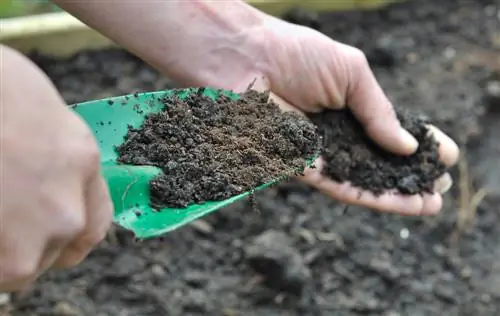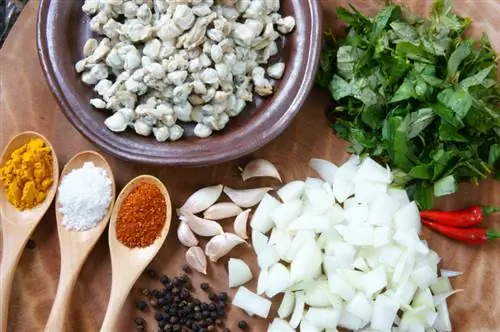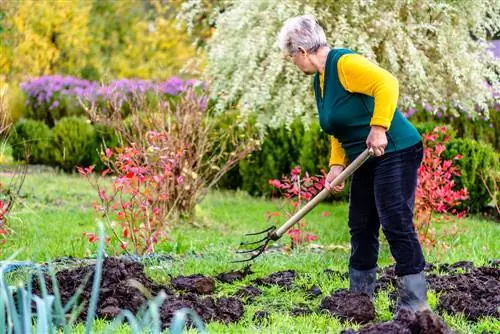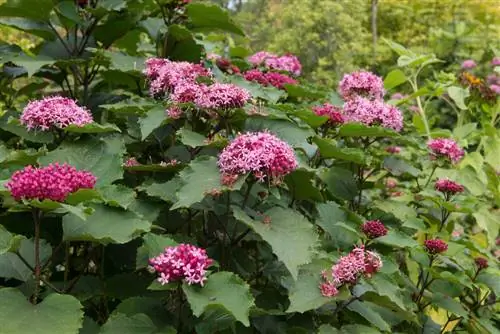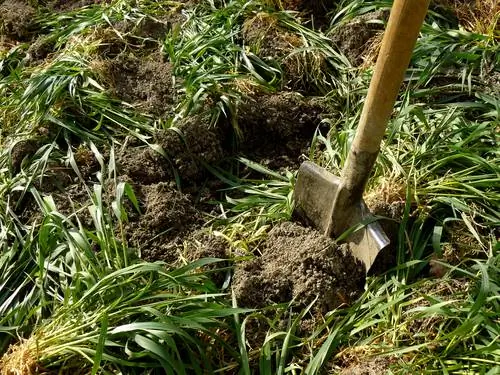- Author admin [email protected].
- Public 2023-12-16 16:46.
- Last modified 2025-01-23 11:21.
Compost is a structure in which countless living things occur. They ensure the breakdown of plant waste and produce a nutrient-rich substrate. When using the compost in the garden, you need to pay attention to its maturity stage.
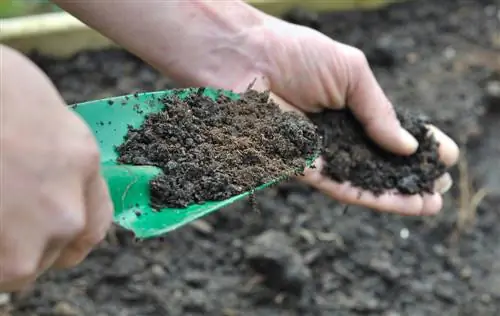
How to incorporate compost in the garden?
Incorporating compost into the garden depends on the stage of maturity. For fresh compost, sprinkle it on the soil and rake it in lightly. If the compost has matured, use it as a layer of mulch on the bed. Dig stale compost directly into the soil or fill planting holes and seed grooves with it.
Use fresh compost
The fresh or mulch compost that is not yet fully ripe can be used after three to four months. It is used for soil maintenance because it contains large amounts of non-rotting material. This semi-decomposed substrate has a diverse soil fauna. Countless bacteria, yeasts, beetles, worms, woodlice and mites live in it. This structure requires oxygen so that the organisms do not die and can continue to convert the material. The substrate should not come into contact with roots as rot quickly occurs.
Sprinkle the fresh compost onto the soil. In this way, you supply your beds with soil organisms and the non-rotting plant parts lie on the soil like a protective layer, so that the living beings are protected from cold temperatures. Lightly hook the compost to mix it with the bed soil. Fall leaves are suitable as an additional layer of protection against cold, heat and rain.
Apply mature compost
The mature compost contains less visible soil organisms such as earthworms because the rotting processes are well advanced and only a small amount of woody plant residue is present. Invisible microorganisms continue to live in the substrate and require oxygen to function. Be careful not to completely undermine this substrate as the organisms will die in the absence of air.
This is what ripening compost does in the bed:
- Fertilization by flushing out nutrients
- Inoculation of the garden soil with soil organisms
- Improving air circulation and water balance
So that the ground does not freeze in winter and the soil creatures can continue to work, you should mulch the bed. The following spring you will find a bed with fine, crumbly substrate, which you can work into the ground before planting.
Incorporate stale compost
Compost that has been stored for more than a year is ideal as fertilizer. The soil organisms have withdrawn from this substrate. Bacteria and yeast die. The substrate becomes firmer and mineralized. You can use this compost as fertilizer, which is buried into the soil. Fill planting holes and seed grooves with the substrate to give the plants an ideal start to the growing season.

